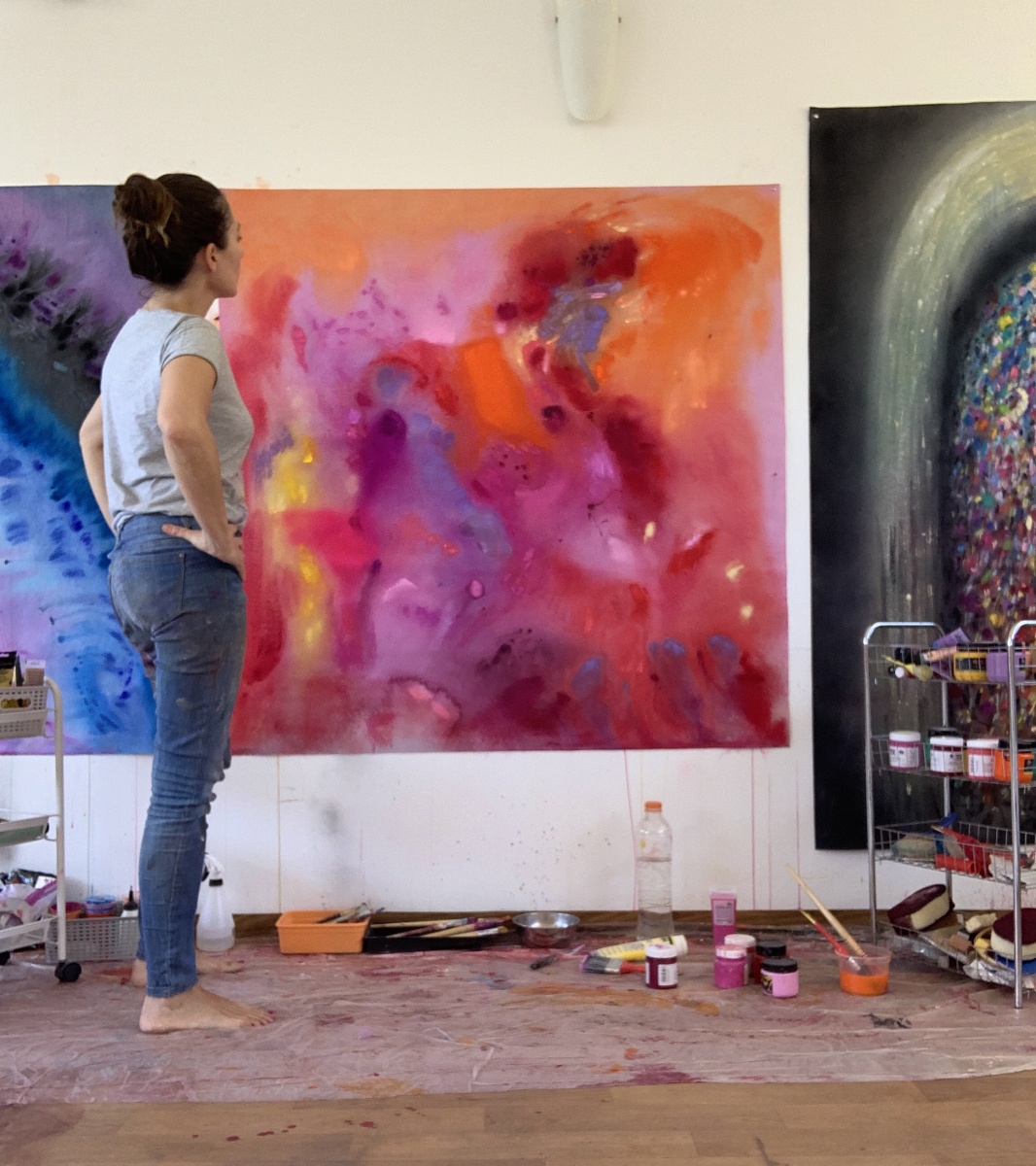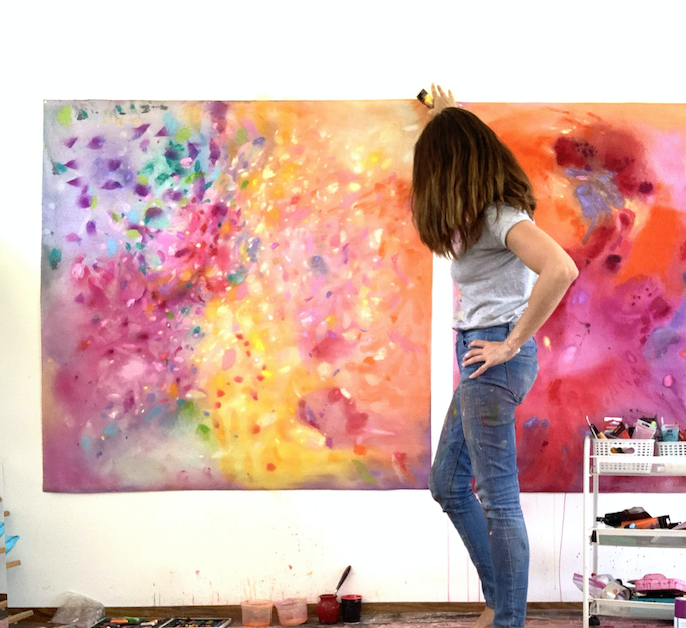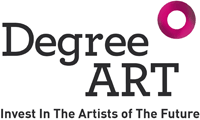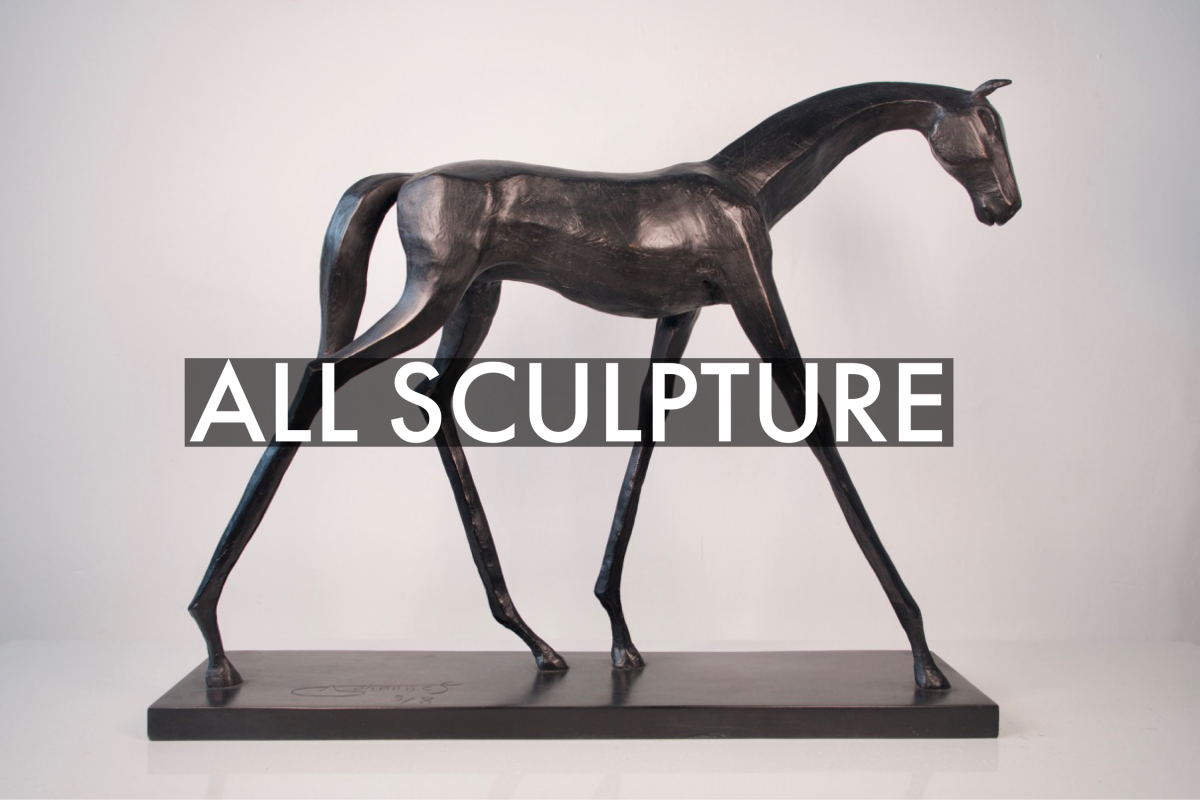Beatrice Dina's work explores themes of cultural hybridity, identity formation, philosophy, and spirituality. Her vivid paintings and illustrations merge at times lyrical abstraction with subtle representation, as the intent of her color-charged artworks is to connect with our deepest emotions and fears. Born in Italy, Dina began her career in advertising as a graphic designer and art director, moving then to film production. Her diverse body of work includes documentary films, illustrations, mixed media paintings, textiles, ceramics, and sculptures.
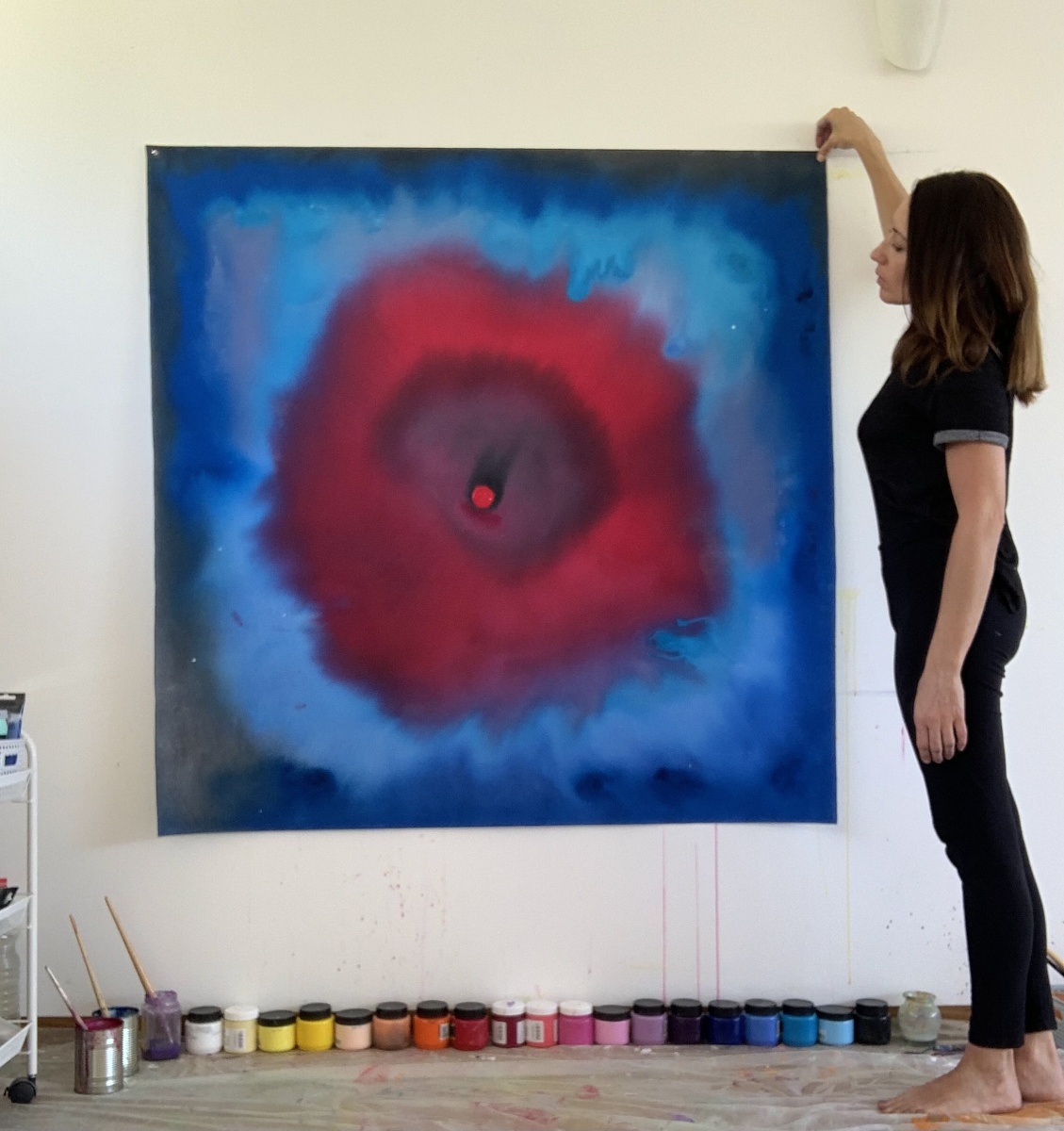
1) Which art movement do you consider most influential on your practice?
The art movements that influenced me the most are Spiritualism, with the visionary Hilma af Klint and Wassily Kandinsky, seeking to transcend the material world and convey spiritual experiences through their art. The Postwar Women, especially Helen Frankenthaler with her ‘soak-stain’ technique, and from Britain, the vitality and playfulness of pioneering Gillian Ayres, and a living legend of Lyrical Abstraction and colour field painting, the British Modern Master Frank Bowling.
2) Where do you go and when to make your best art?
I created some of my best art in an enormous studio, inside an abandoned salt factory in 2022. The light, the silence and the raw space allowed me to experiment with new materials and immerse myself in large scale paintings like never before. Last year I relocated back with my family to London, and the working space decreased drastically. Luckily we live now in a very green area, near a wild forest, and I made my home studio in the conservatory, as the light coming through the glass roof is incredible.
Forest bathing and outdoor walks with my dog are a vital routine in my art practice. Anytime I wonder in the woods with Molly, my mind and body realign and ideas flow organically. I am very grateful to be able to create surrounded by such stunning nature, which is very similar to where I come from in North Italy.
3) How do you describe your 'creative process'?
The last seven years were painfully hectic and destabilising. We relocated abroad three times, lived in ten different locations, experienced war, personal loss and sickness. I used to paint at any stolen moment of day or night, in improvised studios, within the responsibilities of family life, the challenges of an uncertain present and chronic pain. Finally the new conservatory-studio has changed that fragmented routine. Today I’m following the natural light rhythm, as the studio is dark and cold at night. I therefore sketch, draw and paint in the day light, while in the evenings I sit at my desk to write, illustrate, digitise, archive, and update my website and social media.
When I paint, I work in an intuitive way, not towards a narrative, like in filmmaking, but rather towards contemplation, striving to combine serious matter with playfulness. As a painter and a mother, I’m learning every day to embrace more humour, being more fluid, to balance the heaviness of past traumas and struggles that shaped who I am, but that at times can sabotage my artistic vision. I have also adopted a more intimate approach to painting, using directly my hands, often forgetting to use brushes, dipping my fingers directly into paint jars or spreading the soft pastels like ointments, in circular patterns, as if healing invisible wounds.
As a visual artist and documentary filmmaker, I’ve always been attracted to the inner landscapes of human beings, exploring themes of cultural hybridity, identity formation, philosophy, and spirituality, focusing on the human condition through my subjective experience. Having lived among complex and conflictual worlds, between different continents, traditions, and belief systems, my work reflects a synthesis of diverse cultural influences and a personal exploration of identity, belonging and freedom.
My paintings are characterised by bold and vibrant colour choices, often applied in multiple layers, like the multiple fabrics of societies I inhabit. Colour becomes a vehicle for conveying emotion and energy. As a result of this thick and diverse identity tapestry, I became interested in the transcendental, in the constant transformation and impermanence of all things, love and loss, suffering and growth, human conflict, and most of all, how we can arrive from the material to the immaterial, where perhaps we can find more things in common than the conflictual realities we live in.
4) Which artist, living or deceased, is the greatest inspiration to you?
I often think of Joan Mitchell, especially when I’m struggling with self-doubts. I wish I could be as fearless as she was. Among the living artists, Jadé Fadojutimi is the one who reminds me of that vital bold energy.
5) If you weren't an artist, what would you do?
I would be a neuroscientist. My interest in biology and psychology has always been present, but it was during my pregnancy with my daughter that I developed a profound fascination with neuroscience. I wanted to delve into the intricacies of how the human brain and cognitive functions evolve. This exploration became even more significant after I had neurosurgery and wanted to understand and contribute to the optimal development of my children and heal myself, striving towards our best versions.
6) What do you listen to for inspiration?
I love listening to music while I paint, especially alternative jazz and classical mix, featuring artists such as GoGo Penguin, Mammal Hands, Max Richter, and the Reykjavik Orchestra. I also love Pop-Soul, R&B, and Blues. Currently, I'm enjoying Olivia Dean’s album 'Messy.' Thanks to my children, I'm exposed to all kinds of pop music and I often end up listening to their music library, as it helps me loosen up and be more playful, then, when I have enough, I go back to my library filled with podcasts about art and science.
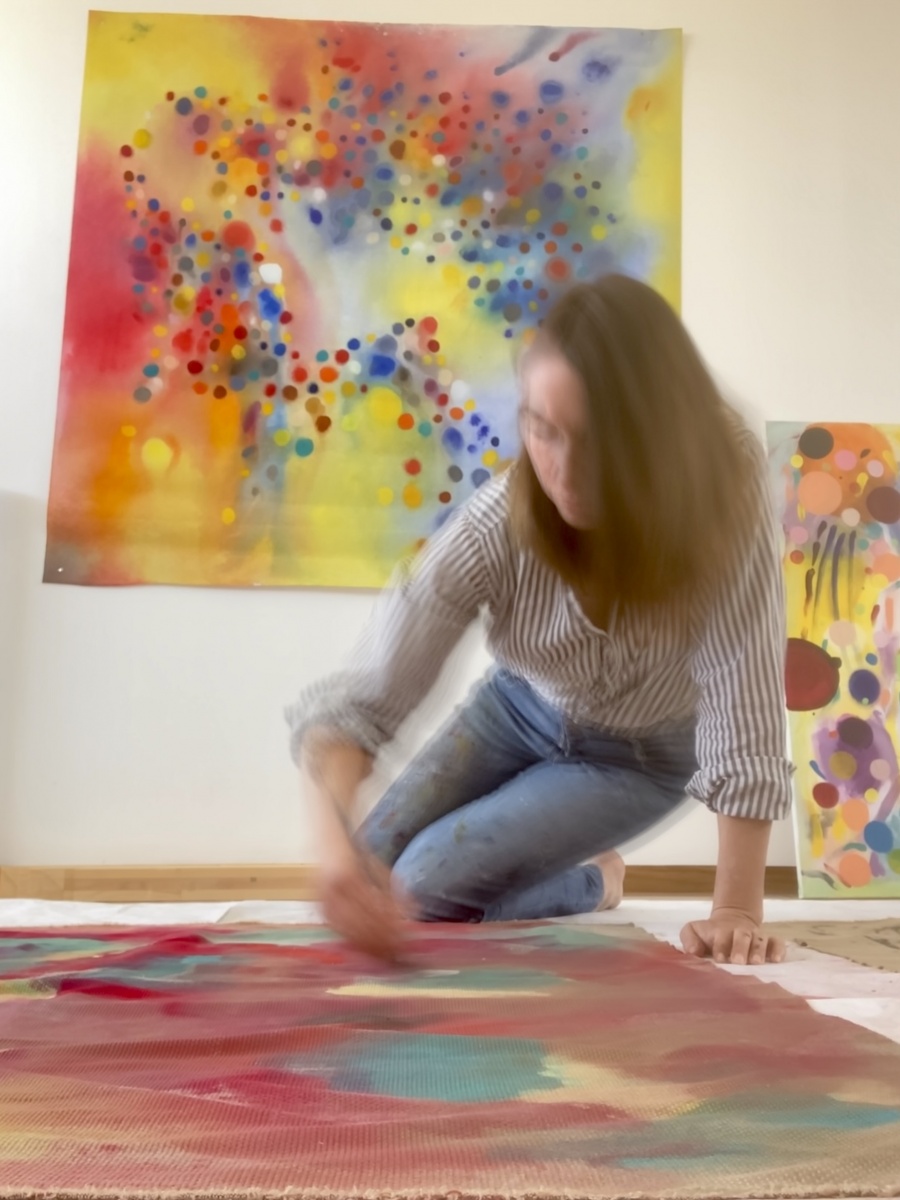
7) If you could own one artwork, and money was no object, which piece would you acquire?
I’d choose “La Primavera” by Botticelli, the first painting that moved me to tears when I was a child, on a school trip to the Uffizi museum. I remember feeling so overwhelmed by such beauty that I started to cry, and my teacher had to physically remove me, as I didn’t want to leave the room.
8) If your dream museum or collection owner came calling, which would it be?
I’d scream in joy if Valeria Napoleone would acquire one of my paintings for her collection, and living in London, my dream museum is the Tate Modern.
9) What is your key piece of advice for artists embarking on a fine art or creative degree today?
I’d say, be grateful you can study Art.
When I was in high school in Italy, I excelled in scientific and classical studies, and my Latin teacher persuaded my parents to not let me attend the Art Academy, as she believed I should have studied medicine. I eventually studied Design & Communication, and I’ve worked in Visual Arts for more than twenty years, first as a graphic designer and art director in advertising, then as a film producer and documentary filmmaker. It took me a long time to fully embrace the uncertainties of a painter’s life.
10) What is your favourite book of all time (fiction or non fiction)?
I’d choose two books, one for each language that formed me:
“Se questo é un uomo”, by Italian author Primo Levi, is one of the most important book of the 20th Century, and sadly still imperative today, as antisemitism is growing all over the world.
“Wuthering Heights” by English novelist Emily Brontë, is a book that haunted me, shaping the way I look at generational traumas, and what it means to be human, having compassion for imperfect characters, decades before I read anything about psychology.
11) If you could hang or place your artwork in one non-traditional art setting, where would that be?
I’d be honoured to have an artwork of mine in The National Hospital for Neurology and Neurosurgery (NHNN), Queen Square. Five years have passed since my neurosurgery, and that sense of urgency, to do whatever it takes to finally live the life I’ve always wanted, hasn’t left me. Art saved me. When no medicine could kill my pain, only painting would. I’m the living proof that creating art is an act of survival and when I see the tragic events hitting our world, I am filled with despair and darkness. This is why I paint, to bring myself back to life, hoping all those bright colours can bring a smile to someone’s face, even if only for a moment.
12) What was the biggest lesson your university course or time studying taught you?
To always look openly, art is open-ended, it’s not about understanding, but imagining and listening. All art comes from love of doing something and the experience of it, till we lose ourselves in it.
13) And finally, if we were to fast forward 10 years, where would we find you?
In ten years you will find me in my London studio, with big windows, lots of papers scattered on the floor, a jungle of plants all over and big scale paintings on the wall, preparing for my solo show in Italy.
Learn more about Beatrice and discover her collection of paintings.


